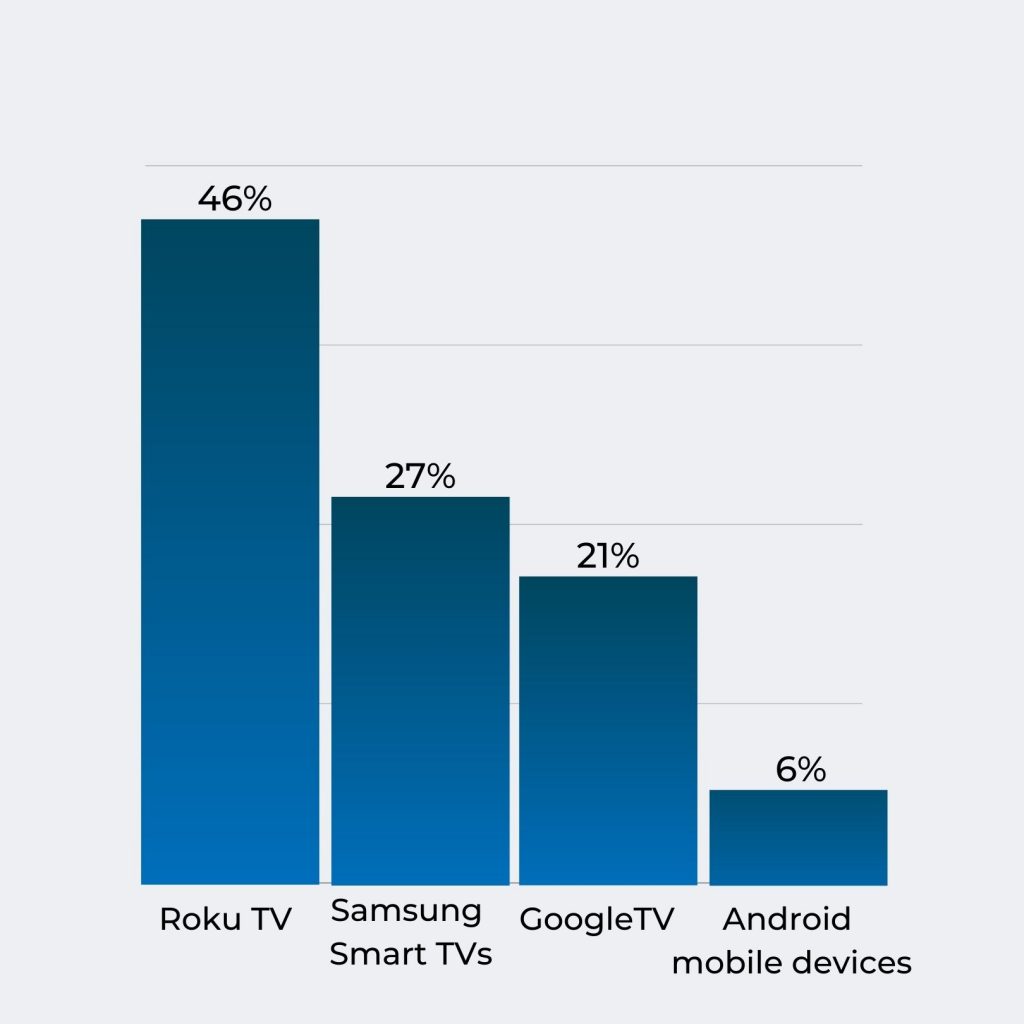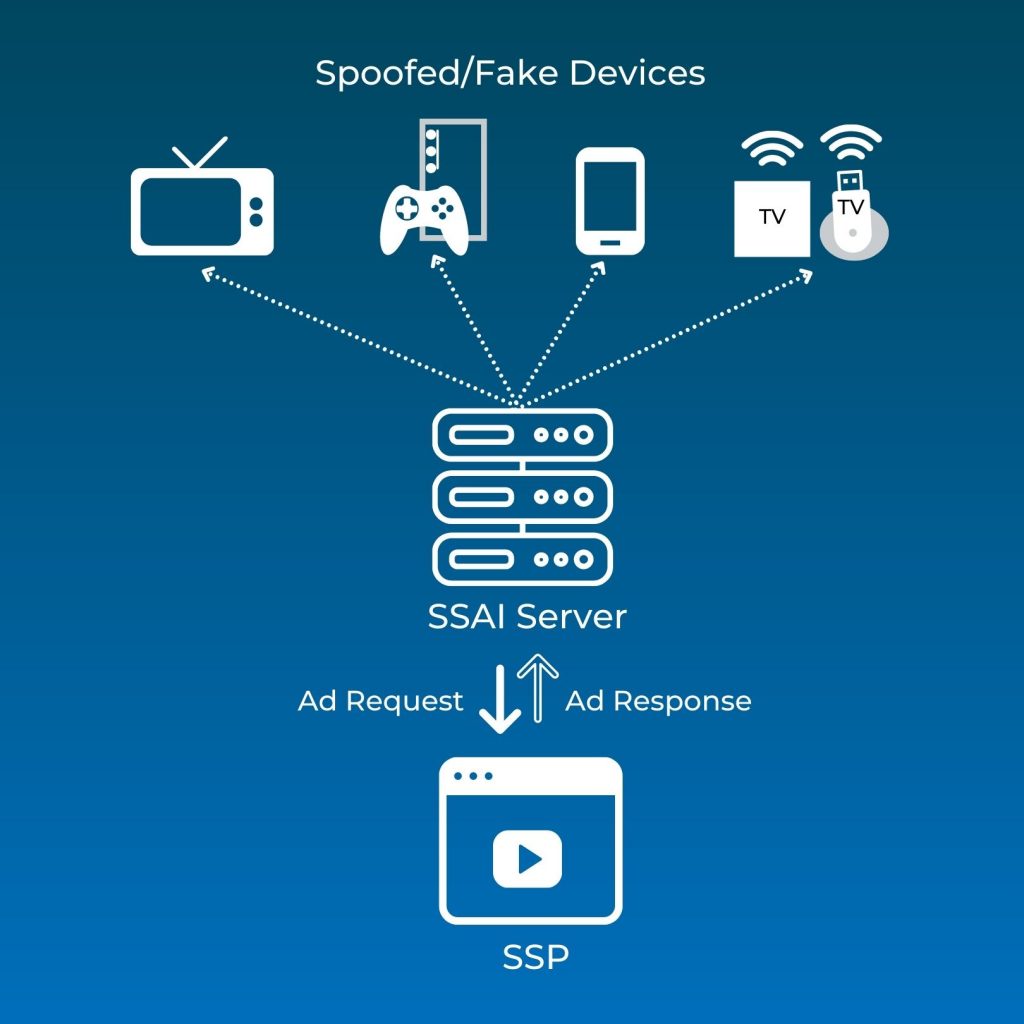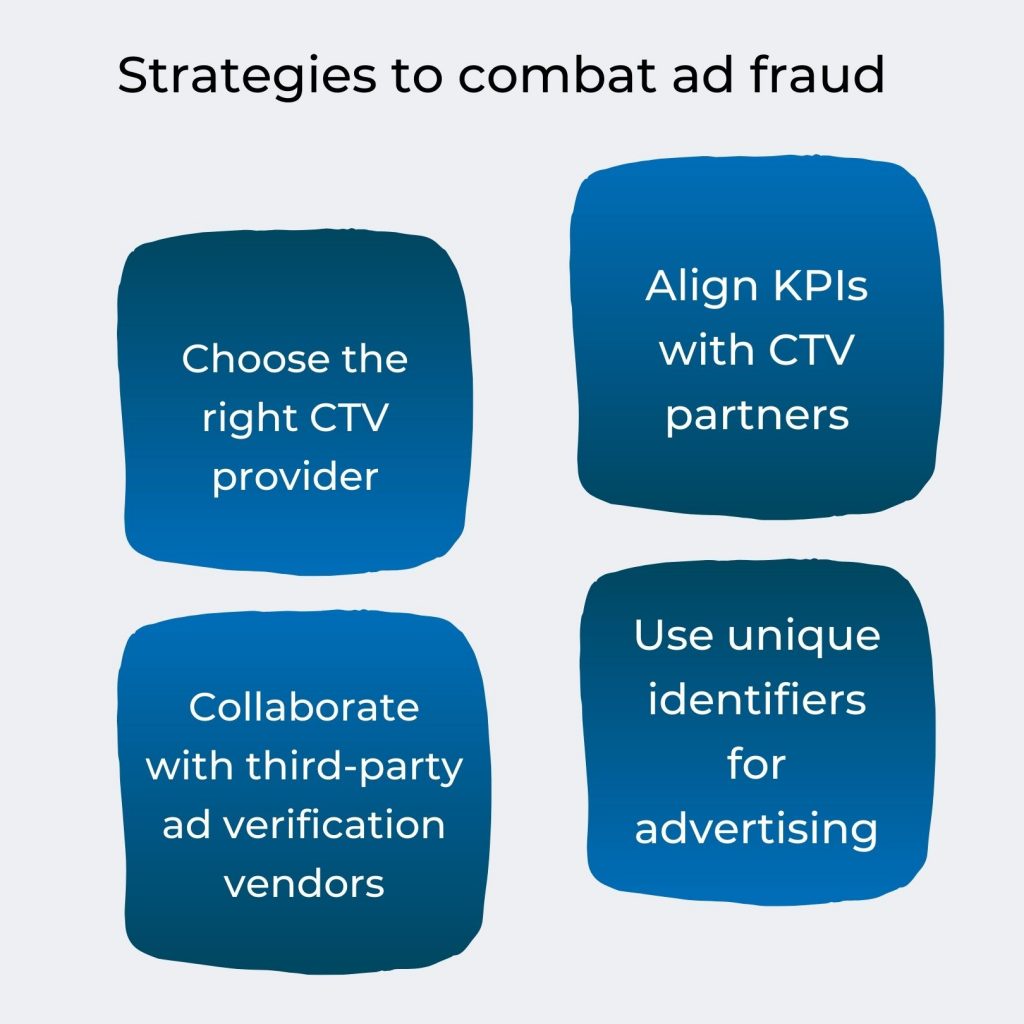Ad fraud is a massive threat to advertisers at an estimated cost of $44 billion in 2022. As CTV advertising rises in popularity, nefarious players are launching fraud operations to steal advertisers’ ad spend. Publishers are affected by this too, with CTV fraud costing them at least $144 million a year.
Ad fraud directly impacts the effectiveness of your CTV campaigns. Fraud makes it harder to reach your marketing goals through advertising, whether it’s to boost brand awareness or bring in more revenue. Your ad spend goes to waste and into the pockets of bad players.
In this article, we discuss the reasons why there is ad fraud in CTV, examples of CTV fraud, and strategies that you can use to prevent, track, and combat fraud in the CTV space.
Read also: OTT vs CTV: What to Consider For Effective Advertising
Understanding Ad Fraud in CTV Advertising
The recent ICEBUCKET operation uncovered by the White Ops bot mitigation team has opened our eyes to an alarming threat in the CTV space – ad fraud.
At its peak, the operation had bots posing as 2 million viewers in more than 30 countries, stealing ad spend meant for actual consumers. This single operation generated around 1.9 billion daily ad requests in January, making up 28% of the total programmatic CTV traffic. Affected devices include:

Fragmentation of the CTV space, high CPM, and lax regulations entice attackers to organize full-scale fraud operations like ICEBUCKET. Let’s look at each in detail:
•Fragmentation: The current CTV landscape is composed of different players, such as CTV device manufacturers, ad platforms, over-the-top content providers, and server-side ad insertion services. This fragmentation makes it harder for advertisers to track and measure ad campaigns, allowing fraud to go unnoticed for a longer period of time.
•High cost per mileage (CPM): CPM is the price a marketer pays for every thousand views of an advertisement. Marketers usually pay a higher CPM for CTV ads ($35-$65) than for linear TV ads ($10-$15).
CTV ads cost more because they offer more benefits to advertisers–such as reaching global customers or boosting ad engagement. But this higher ad spend by marketers lures fraudsters to target CTV in the hopes of taking away a huge profit.
•Absence of regulations: The CTV space exploded so quickly that there hasn’t been enough time to draw up fraud protection laws, standardized practices, and measurement metrics.
Even then, cyber fraud has always been a gray area of law enforcement with little to no regulations in many countries. The lower the risks, the more enticing it is for bad players to engage in fraudulent activities.
Read and listen to: CTV for Advertisers: Fraud, Attribution, and Strategies | Podcast #1
Examples of CTV Fraud
The most common type of CTV fraud is spoofing – the act of disguising a signal from a fraudulent activity as being from a legitimate source. Bad players pretend to be audiences who are watching ads on CTV devices and take away ad spend through spoofing tactics, such as:
•IP spoofing: In this tactic, attackers disguise themselves as specific computer IP addresses to impersonate another computer system and create fraudulent traffic. In fact, Adobe found that 28% of all web traffic comes from fraudulent bots and other “non-human” signals.
In the ICEBUCKET operation, fraudsters “spoofed” the IP addresses of 2 million devices in 30+ countries when actually 99% of the traffic was coming from just one country – the US. The marketer then buys the CTV ad space thinking it would be served to a particular group of people, but ad spend ends up at a different set of people or goes to bots.
•Device spoofing: This is a tactic where bad players disguise the actual device they’re using as different devices, such as mobile phones, browsers or laptops, to click on ads and fill forms on websites. Usually, a large number of clicks coming from a single device would indicate fraud. But by disguising their actual device, bad players can pose as audiences and take away marketers’ ad spend without getting notified as fraud.
•SDK spoofing: This is a type of mobile fraud where bad players mimic genuine app installs, purchases, and clicks. Fraudsters use fairly complicated technology to deceive attribution providers and devour an advertiser’s budget. According to Interceptd, 21.3% of iOS and 26.9% of Android app installs are a result of SDK spoofing.
•Server-side-ad-insertion (SSAI) spoofing: SSAI is a recent piece of technology developed by publishers to create a more seamless CTV ad experience for customers. Ads are “stitched” into OTT videos so customers no longer have to wait for ad players to launch. Since SSAI is still fairly new, fraudsters look for loopholes in the technology to launch fraud operations.
SSAI spoofing happens when fraudsters send out millions of ad requests from data centers pretending to be CTV devices. In reality, real audiences never saw the ads. Marketers’ ad spend goes towards the pockets of fraudsters instead of generating returns on investment.

Strategies to Combat Ad Fraud
To track, prevent, and combat different kinds of CTV fraud, here are the strategies you can take:

Choose the Right CTV Provider
It’s crucial to pick the CTV advertisement provider that allows pixels so you can track your own ad campaigns. These tracking metrics can tell you where and how viewers are interacting with your advertisements. If there is suspicious behavior, you can investigate it immediately instead of relying on your CTV provider.
Tracking your own metrics reduces the chances of your CTV provider grading their own performance, which can lead to inconclusive or misleading metrics around the effectiveness of your ad campaigns.
Read also: What is CTV Advertising and How Does It Benefit Advertisers
Align KPIs with CTV Partners
Advertisers and agencies need to be clear about their KPIs. Decide what your ultimate goal is, whether it’s reach, conversion or engagement, and look at the best way to measure this goal before starting your ad campaigns.
For instance, click-through rates for your ads might not be a good metric if you want to boost conversion rates. Instead, you’ll need to look at the actual number of orders generated from these clicks.
Once you’ve decided on a set of KPIs, align these KPIs across all CTV partners so they can track and assess the performance of your ad campaigns accordingly.
Collaborate with Third-party Ad Verification Vendors
Third-party ad verification vendors can make sure your ads are not hosted through fraudulent publishers.
Vendors attach verification tags and send you reports of the performance and placements of every advertisement. This ensures that your ads aren’t showing up on a fraudulent device with sophisticated bots as audiences.
If you already have a full in-house team to tackle ad fraud, third-party verification vendors can add an extra layer of protection. If you don’t, third-party vendors might be a more cost-effective starting point.
Use Unique Identifiers for Advertising
The International Bureau of Advertising (IAB) has recently published guidelines for Identifier for Advertising (IFA) specifically for CTV devices. Each CTV device, such as smart TVs and video game consoles, can now have their own identifiers.
These identifiers are sent to the publisher’s OTT apps and ad servers, and to the advertiser’s ad servers or demand-side platforms. Use these identifiers to track your ads at every stage so your ad spend doesn’t fall into the hands of nefarious players.
Conclusion
Fraud is a natural by-product of an ever-evolving environment like AdTech. While it poses a threat to ad effectiveness, it’s possible to assess, track and combat fraud with joint efforts of every player in the industry–from CTV content providers to ad verification vendors.
But the first step in boosting return on ad spend on your CTV campaigns is to achieve minute, granular audience targeting. When you know who your exact customers are, it’s easier to uncover if there is fraud underneath the hood.
AlikeAudience, a top 10 audience data management platform in the APAC, colludes across different mediums to provide greater accuracy in audience targeting, especially with CTV advertising.
We offer over 7000 audience segments that are 90% accurate (as validated by Nielsen Digital and Rating), sourced directly from trusted partners across 13 countries, including the US, Hong Kong, Australia, Japan, and Indonesia.
Our audience segments are created by matching exclusive credit card transaction data and opted-in IDs from 1.1 billion unique mobile devices. Thanks to our partnerships with RampID, UID 2.0, and Yahoo ID, our segments are 100% device agnostic, and CTV-ready.
Contact our data strategist today to devise safe, privacy-compliant, and effective CTV ad campaigns that are sure to boost return on ad spend.


